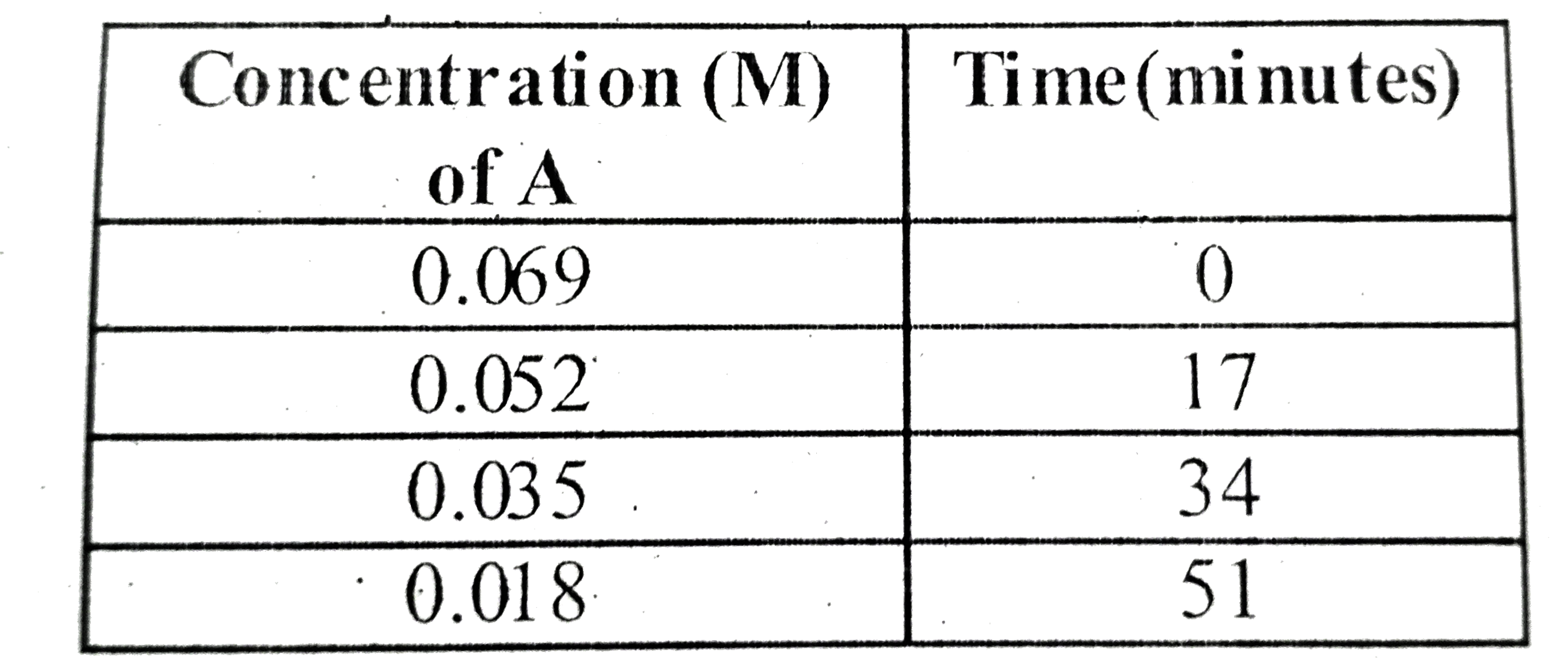The rates of a certain reaction (dc/dt) at different times are as follows

The reaction is
Zero order
First order
Second order
Third order
The correct Answer is:a
The concentration of reactant does not change with time for zero order reaction (unit of k suggests zero order ) since reactant is in excess.
Topper's Solved these Questions
- CHEMICAL KINETICS BOOK - ERRORLESS CHAPTER - CHEMICAL KINETICS EXERCISE - Ordinary Thinking (Collision theory , Energy of activation and Arrhenius equation )
45 Videos
- CHEMICAL KINETICS BOOK - ERRORLESS CHAPTER - CHEMICAL KINETICS EXERCISE - Critical Thinking Objective Questions
20 Videos
- CHEMICAL KINETICS BOOK - ERRORLESS CHAPTER - CHEMICAL KINETICS EXERCISE - JEE (Advanced ) 2018
1 Videos
- CHEMICAL EQULIBRIUMBOOK - ERRORLESS CHAPTER - CHEMICAL EQULIBRIUMEXERCISE - JS JEE SECTION (ONLY ONE CHOICE ANSWER (Matrix)
1 Videos
- CHEMISTRY IN EVERYDAY IN LIFEBOOK - ERRORLESS CHAPTER - CHEMISTRY IN EVERYDAY IN LIFEEXERCISE - Critical Thinking (Objective question )
25 Videos
Similar Questions
The concentrations of the reactant A in the reaction A →B at different times are given below:

The rate constant of the reaction according to the correct order of reaction is :
View SolutionThe rate of a certain reaction depends on concentration according to the equation:
−dCdt=K1C1+K2C.
What will be the order of reaction, when concentration (C ) is:
(a) very-very high?
(b) very-very low?
View Solution
Knowledge Check
The rate of a certain reaction at different times is as follows
Time0102030Rate3.2×10−23.18×10−23.22×10−23.19×10−2
The order of the reaction isA1BzeroC2D3The rate of a certain reaction is given by , rate =K[H+]n . The rate increases 100 times when the pH changes from 3 to 1 . The order (n) of the reaction is ______.
A2B0C1D1.5The rate of a certain reaction is given by, rate = k[H+]n. The rate increases 100 times when the pH changes from 3 to 1. The order (n) of the reaction is
A2B0C1D1.5
Concentration dependence of rate is called differential rate equation. Integrated differential equations give relation between directly measured experimental data i.e., concentration at different times and rate constant. The integrated rate equations are different for the reactions of differennt reaction orders. the first-order reaction has a rate constant 1.15×10−3s−1.
Q. When the rate constant has same units as the rate of reaction, the order of the reaction is:
View SolutionConcentration dependence of rate is called differential rate equation. Integrated differential equations give relation between directly measured experimental data i.e., concentration at different times and rate constant. The integrated rate equations are different for the reactions of differennt reaction orders. the first-order reaction has a rate constant 1.15×10−3s−1.
Q. For a reaction,
A+H2O→B
Rate∝[A]
The order of the reaction is:
View SolutionConcentration dependence of rate is called differential rate equation. Integrated differential equations give relation between directly measured experimental data i.e., concentration at different times and rate constant. The integrated rate equations are different for the reactions of differennt reaction orders. the first-order reaction has a rate constant 1.15×10−3s−1.
Q. Under which condition a bimolecular reaction is kinetically first order reaction:
View SolutionThe rate of a reaction is expressed in different ways as follows
+12d[C]dt=−15−d[D]dt=+13d[A]dt=−d[B]dt
the reaction is ________.
View SolutionThe rate of a certain biochemical reaction c arried by enzymes in human body is 103 times faster than when it is carried in the laboratory. The activation energy of the reaction:
View Solution
